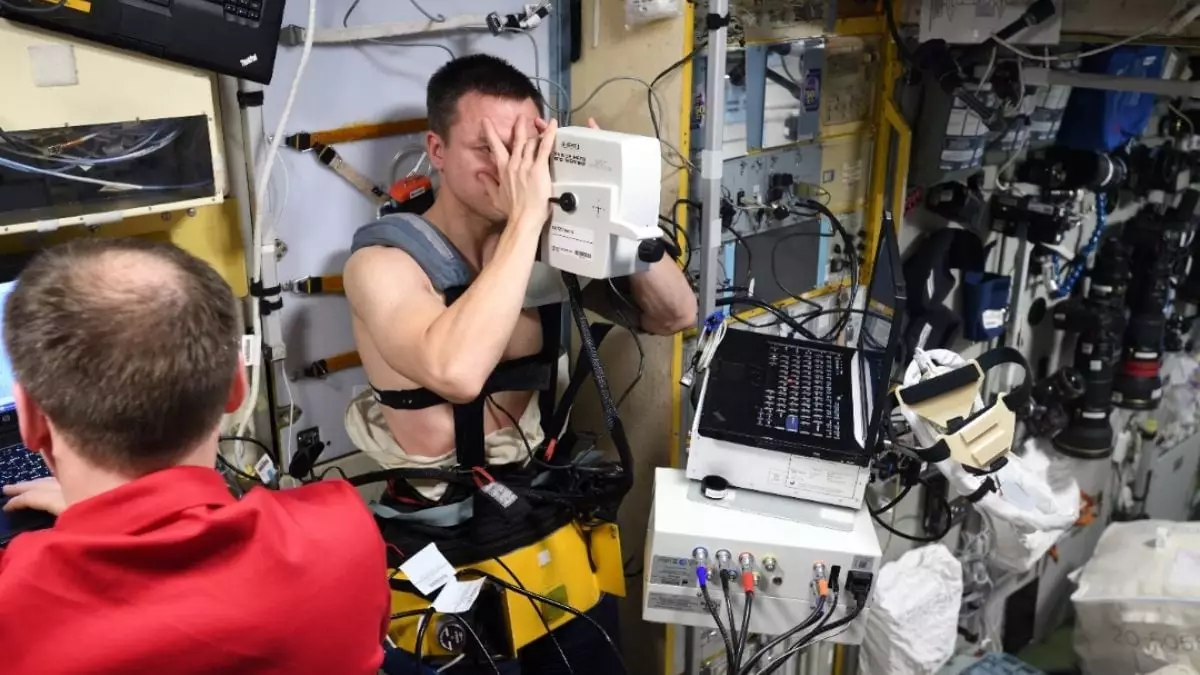In the realm of space exploration, a troubling trend has emerged among astronauts who spend prolonged periods aboard the International Space Station (ISS). An alarming 70% of those who have spent between six to twelve months in a microgravity environment report significant alterations in their vision. This phenomenon raises critical questions for the future viability of extended missions into deep space, particularly those targeting destinations like Mars. The condition at the center of this investigation, known as spaceflight-associated neuro-ocular syndrome (SANS), manifests through various symptoms, including optic nerve swelling, distortion of the eye’s back surface, and general visual impairment.
The relationship between microgravity and ocular health is believed to stem from fluid redistribution in an environment lacking gravitational pull. This redistribution leads to increased pressure on ocular structures, thus affecting vision. While many astronauts experience a resurgence of their vision capabilities upon returning to Earth’s gravity, the long-term consequences of these changes are still poorly understood. As the scientific community delves deeper into this issue, the implications for missions beyond low Earth orbit become increasingly urgent.
Recent research spearheaded by Santiago Costantino at the Université de Montréal, involving 13 astronauts from diverse backgrounds, emphasized the necessity of this inquiry. Measurements taken before and after their ISS stays highlighted an alarming trend: a 33% decline in ocular rigidity, an 11% reduction in intraocular pressure, and a 25% fall in ocular pulse amplitude. Such statistical declines underscore the physical toll that prolonged space travel can impose on the eye, alongside elevated choroidal thickness in some astronauts, which indicates abnormal fluid retention.
Interestingly, SANS has been documented since the early 2000s, with earlier reports coming from Russian cosmonauts during their tenure aboard the Mir space station. NASA formally classified SANS as a recognizable condition in 2011, acknowledging that the risk of ocular complications is not a new concern but one that requires ongoing vigilance. While the fluid shift in microgravity is identified as a leading factor, the complex underlying mechanisms contributing to SANS are still under rigorous investigation.
To mitigate these risks, various countermeasures are being developed. Researchers are exploring options such as negative pressure devices, pharmaceutical interventions, and tailored nutrition protocols aimed at maintaining ocular integrity during extended missions. Moreover, ongoing studies are focused on identifying astronauts who may be predisposed to severe ocular conditions, promoting proactive measures rather than reactive solutions.
Looking Ahead: Protecting Astronaut Vision
As space agencies work tirelessly to uncover effective strategies to safeguard astronauts’ vision for future expeditions, the need for advancements in this field becomes more pronounced. Costantino’s research hints at the potential for using changes in the mechanical properties of the eye as biomarkers for early detection of SANS, which may enable timely intervention. With ambitions set high for long-duration missions to destinations like Mars, it is essential to prioritize the health and safety of key personnel ensuring the success of these ambitious ventures. Only through a comprehensive understanding of ocular health can future astronauts embark on their journeys with greater confidence in their visual capabilities.

Leave a Reply